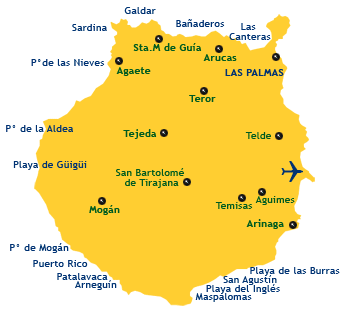 |
Spain | Travel | Regions | Cities | Coasts | Islands | Culture |
| Spain / Canary Islands / Gran Canaria / The Tracks of the Guanches |
|
| More Information | ||
| Plan your Trip | ||
| ||||||
 The Guanches were the original inhabitants of Canary Islands. The word comes from Guan Chenech, which is how the natives of Tenerife called themselves in their own language. With the passage of time, the term Guanche became identified with the natives of the all the Canary Islands.
The Guanches were the original inhabitants of Canary Islands. The word comes from Guan Chenech, which is how the natives of Tenerife called themselves in their own language. With the passage of time, the term Guanche became identified with the natives of the all the Canary Islands. This population of white skin and tall figure is a mystery to historians. In the Canarian Museum of Las Palmas you will find a collection of some of the most interesting findings, but Guanches have left their tracks in all the island: Galdar, Telde: this village, which is worth a visit alone for its beautiful landscape and great beaches, has in its surroundings one of the most interesting tracks of the Guanches as an additional attraction: the Montaña Sagrada, the "Holy Mountain", together with several caves which were habited by this population. San Bartolomé de Tirajana: You can arrive to this village which is "hidden" in an enormous volcanic crater only by narrow mountain streets, passing the island's highest mountains, Pozo de las Nieves (1.965 m) and Los Pechos (1.961 m). Close to it there is the Guanche's Necropolis of Artenara. Temisas: another romantical small village with fine beaches, offering interesting historical remains as an additional attraction. In Malpais, located close to Agaete, were made very important archaeological findings. More Information: Canary Islands | Gran Canaria | The beaches | Las Palmas de Gran Canaria | Excursions | Photo Tour |